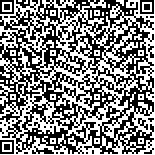| 摘要: |
| 氏沼虾(Macrobrachium rosenbergii)雄虾有四种不同形态:小雄虾(SM)、橙色螯(OC)、蓝色螯(BC)和老蓝色螯(OBC)雄虾;雌虾分为四种:性腺未发育(IF)、性腺成熟(MOF)、抱卵(BF)和已产幼体(SF)的雌虾。已有研究表明不同形态的雌雄虾的体重存在显著差异,为了探讨是否可以对罗氏沼虾不同形态雌雄虾所占比例开展选择来间接提高产量,首次对上述性状的遗传参数及其与收获体重的遗传相关进行了评估。记录了罗氏沼虾核心育种群体两代共计40 935尾个体的形态和体重信息,使用父母本育种分析模型和阈值统计模型估计不同形态二分类(0和1)阈值性状在世代间和世代内的遗传参数,并使用两性状模型估计其与体重性状的遗传相关。方差组分估计结果表明,雄、雌虾不同形态阈值性状的遗传力估计值分别为0.08~0.12和0.04~0.22。雄虾形态OC、BC阈值性状与收获体重间为低度正相关(0.01~0.43)。雌虾形态IF、BF、SF阈值性状和收获体重性状之间为中等程度相关(–0.61~0.53)。在我国土塘养殖模式下,罗氏沼虾雌雄个体不同形态阈值性状存在可利用的加性遗传变异,具有较大的改良空间;选择OC形态雄虾并增加其在育种群体中比例,并不会降低其生长速度;选择IF形态雌虾并增加其在育种群体中的比例,可能会降低其生长速度。 |
| 关键词: 罗氏沼虾 螯色 不同形态 阈值性状 遗传参数 |
| DOI:10.11693/hyhz20211100289 |
| 分类号:Q953;Q789;S966.1 |
| 基金项目:蓝色粮仓国家重点研发计划项目,2018YFD0901301号,2018YFD0901300号;财政部和农业农村部:国家现代农业产业技术体系资助,CARS-48号;浙江省农业(水产)新品种培育重大科技专项计划项目,2016C02055-2-1号。 |
|
| AN ANALYSIS ON GENETIC VARIATION OF THRESHOLD TRAITS OF FEMALE AND MALE MORPHOTYPES IN MACROBRACHIUM ROSENBERGII |
|
WANG Jing-Wen1,2,3,4, YANG Guo-Liang5,6, KONG Jie2,3,4, XIA Zheng-Long6, SUI Juan2,3,4, TANG Qiong-Ying5, LUO Kun2,3,4, DAI Ping2,3,4, MENG Xian-Hong2,3,4, CHEN Li-Mei1, LUAN Sheng2,3,4
|
|
1.College of Fisheries, Tianjin Agricultural University, Tianjin 300384, China;2.Key Laboratory for Sustainable Development of Marine Fisheries, Ministry of Agriculture and Rural Affairs;3.Laboratory for Marine Fisheries Science and Food Production Processes, Pilot National Laboratory for Marine Science and Technology (Qingdao);4.Yellow Sea Fisheries Research Institute, Chinese Academy of Fishery Sciences, Qingdao 266071, China;5.Huzhou University, Huzhou 313000, China;6.Jiangsu Shufeng Prawn Breeding Co. Ltd., Gaoyou 225600, China
|
| Abstract: |
| In morphology of the second pereiopod, male Macrobrachium rosenbergii could be divided into four types: small clawed (SM) male, orange clawed (OC) male, blue clawed (BC) male, and old blue clawed (OBC) male. In gonadal development status, female shrimp could be divided into four types: immature female (IF), mature ovary female (MOF), berried female (BF), and spawned female (SF). Results show that body weight between the male and female shrimps in different morphotypes are significantly different. To explore whether the proportion of different types of male and female can be selected to indirectly improve the yield, genetic parameters of the above-mentioned traits and their genetic correlation with the harvest weight in high-density pond culture mode were evaluated for the first time. A total of 40 935 individual records were collected in two generations of the M. rosenbergii population. Genetic parameters for binary traits (0 and 1) of different morphotypes were estimated using sire-dam breeding analysis model and threshold statistical model. A multi-trait threshold-animal model was established to estimate the genetic correlation between the morphotypes and the harvest weight of males and females. The estimated heritability of threshold traits for male and female morphotypes between and within generations were 0.08~0.12 and 0.04~0.22, respectively. The genetic correlation between threshold traits of OC or BC morphotypes and the harvest weight varied from 0.01 to 0.43, and those between threshold traits of female morphotypes and the harvest weight traits were moderate (–0.61~0.53). This study confirmed that the threshold traits of male and female morphotypes had additive genetic variation in high-density pond culture mode. For male shrimp, the two breeding goals of increasing the proportion of OC male shrimp and increasing the growth rate can be achieved simultaneously. For females, increasing the proportion of IF individuals in the population will reduce the whole growth rate, and it is difficult to improve the two traits at the same time. |
| Key words: Macrobrachium rosenbergii claw color morphotypes threshold trait genetic parameter |
